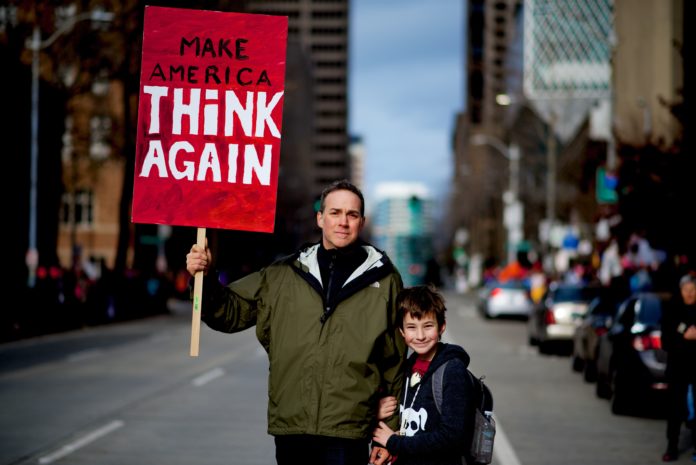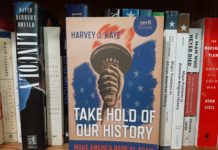Review: Caste– The Origins of Our Discontents, by Isabel Wilkerson, 2020, 475 pp., Random House
As the razor-edged finale to a presidential election riven by ambiguity reaches its conclusion, one overarching reality will endure in stark clarity: the bi-polar, cultural disease dividing America into two angry and unforgiving camps.
Rivers of words diagnosing the malady are fast becoming analytical torrents. Recrimination and reaction to its implications are beginning and will accelerate. As with the companion pandemic that has overlaid this red and blue-hued socio-political plague, experts and historians will parse the origins for generations to come.
The rest of us, meanwhile, can do something more immediate. We can read Caste – The Origins of Our Discontents by Isabel Wilkerson, a book published just in August that reorders most of the prisms through which conservatives and liberals alike think about America in its 244th year. Even if not intended as such, this work of anthropology, sociology, psychology, political science, philosophy and history is a deep well of insight, a primer even, into the dynamics that animated the just-concluded vote, and that will surely animate its aftermath.
Implicitly, this book is also about cities, the spaces where the global issues of this moment are being most profoundly tested, from climate change to shelter to migration to policing. It is also in cities, from Austin to Amsterdam to Abuja, where we might hope that the twisting kaleidoscope of a fast-urbanizing world will transform the divisions of caste into a mosaic of equality.
On one level, Caste is about race and racism, an exploration of America’s original sin of slavery that haunts us today in virtually all of our institutions. But race and racism both have a predecessor that we need to better understand if we are to effectively confront the stubborn and subtle resonance of racism below the surface of so much of what passes for progressive rhetoric.
How can Austin, for example, be both the most avowedly liberal city in Texas and the most sharply segregated? A large measure of the answer might be found in that predecessor of race and racism, this phenomenon of caste and casteism.
In fact, the absurd concepts of race and racism are effectively creations of caste, argues Wilkerson. With this insight in hand, she builds on other recent work, going deeply and broadly into a larger realm that connects our history to that of the anti-Semitism in the 1930s that led to the Nazi Holocaust, and to the millennia old caste system of India that brutally stratifies that country today. In the process, Caste expands upon the seminal work of other recent efforts such as last year’s Pulitzer-winning 1619 Project of the New York Times Magazine, and the new book revealing the sanitization of the 1950s and 60s civil rights movement, The Sword and the Shield – The Revolutionary Lives of Malcolm X and Martin Luther King Jr. by historian Peniel Joseph.
But Wilkerson also takes her readers backwards to pioneering scholarship in the early 20th Century South by the the Black anthropologist Allison Davis in the 1930s and on to America in the 1940s with the work of Gunnar Myrdal, the Swedish economic sociologist and Nobel laureate who penned the 1944 classic book An American Dilemma: The Negro Problem and Modern Democracy. Weaving this tapestry of history and globe-spanning research together, Wilkerson delivers her own pioneering illustration of how tribal hatreds weaken and impoverish victim and victimizer alike — along with all bystanders.
‘None of us are ourselves’
“It was in the making of the New World that Europeans became white, Africans black, and everyone else yellow, red, or brown. It was in the making of the New World that humans were set apart on the basis of what they looked like, identified solely in contrast to one another, and ranked to form a caste system based on a new concept called race. It was in the process of ranking that we were all cast into assigned roles to meet the needs of the larger production,” Wilkerson writes. “None of us are ourselves.”
It’s not that Wilkerson neglects the horrors of slavery, or for that matter Nazi evil or Brahmin brutality and domination. From castration of slaves to President Andrew Jackson’s horseback riding with bridal reins made from Native American flesh, to lynchings continuing well into the 20th Century, there is little horror that escapes Wilkerson’s gaze. But it is the subtler and more pernicious diffusion of caste into our relationships, our rules of engagement with one another – and ultimately our national politics – that make Caste indispensable to understanding our own cultural wars and the deepening collateral damage.
“Americans of today have inherited these distorted rules of engagement whether or not their families had enslaved people or even been in the United States,” Wilkerson writes. “Slavery built the man-made chasm between blacks and whites that forces the middle castes of Asians, Latinos, indigenous people, and new immigrants of African descent to navigate within what began as a bipolar hierarchy.”
Wilkerson takes a vivid example from the March 2018 series of bombings in Austin, Texas that killed two people and injured six over 20 days. The first to die was 39-year-old Anthony House, a project manager living in East Austin, killed after he picked up a package that exploded on his porch. Because House was Black, police initially suspected the case might be drug-related or that House might even have accidentally detonated the bomb himself.
“Based on what we know right now, we have no reason to believe this is anything beyond an isolated incident that took place at this residence and in no way this is linked to a terroristic attack,” then-Interim (now permanent) Police Chief Brian Manley told reporters.
Some ten days later, that theory gave way to presumption of a hate crime when another Black and a Latina resident of East Austin, 17-year-old Draylen Mason and 75-year-old Esperanza Herrera, died as they picked up similarly disguised bombs left on their porches. But it was only after two White men in West Austin triggered a bomb by tripwire and were critically injured six days later, and two days after that when a bomb exploded at a FedEx warehouse, that the investigation began to suspect domestic terrorism. That brought in the help of 500 federal agents and the “police now raced at warp speed,” Wilkerson notes. Ultimately police cornered the 23-year-old suspect, Mark Conditt, who blew himself up as they closed in.
Manley did finally label Conditt a terrorist, but Wilkerson asks, what might have been the outcome if the caste-blinded police had warned the public initially about the threat of randomly dropped packages instead of waiting 10 days?
“People can come to disregard the predicaments facing people deemed beneath them, seeing their misfortunes as having no bearing on their own lives, seeing whatever is happening to them as, say, a black problem, rather than a human problem, unwittingly endangering everyone.”
‘The dominant caste around which all other castes revolve’
It is this all but hidden taxonomy of rank and status guiding our actions, in ways most of us are scarcely aware of, that is the great choreographer of decision-making in American and other societies, Wilkerson argues of her research that took her to Berlin to understand the rankings of “Aryan purity” in the 1930s and throughout India to examine the workings of India’s intricately complex caste system today.
“A caste system centers the dominant cast as the sun around which all other castes revolve and defines it as the default-setting standard of normalcy, of intellect, of beauty, against which all others are measured, ranked in descending order by the physiological proximity to the dominant caste,” she writes.
This understanding of caste explains why recent immigrants from Africa have reversed the practice of earlier “middle castes,” say Italians or Jews from Eastern Europe, who quickly changed their surnames to assimilate as quickly as possible into the dominate Anglo-Saxon caste; Binghenheimer becoming Bingham or Rossellini becoming Ross.
Immigrants from Ghana or Grenada cannot so easily join the presumed dominant caste for the obvious reasons of skin color. So they must take pains to isolate themselves from the bottom-rung of African-Americans, maintaining distinctive accents, dress and names, or in some cases even discouraging their children not “to act like African Americans.”
Wilkerson quotes the late and greatly esteemed Indian jurist B.R. Ambedkar, who rose from his Dalit, or “Untouchable,” origins to become the author of India’s constitution and anti-caste campaigner: … “each caste takes its pride and its consolation in the fact that in the scale of castes, it is above some other caste.”
Which, moving toward today’s political reality in America, explains why so many journalists and analysts were, and remain, blindsided by Donald Trump’s support from working class Whites in 2016 and now. And perhaps it is insight into his surprise support in 2020 from some Black males despite support of White supremacists, or the votes for Trump from Latinos in Texas’ Rio Grande Valley despite the wall, the family separations, and the ugly characterizations of migrants.
“The liberal take was that working class whites have been voting against their interest in supporting right-wing oligarchs, but that theory diminishes the agency and caste-oriented principles of the people,” Wilkerson says. “Many voters, in fact, made an assessment of their circumstances and looked beyond immediate short-term benefits and toward, from their perspective, the larger goals of maintaining dominant caste status and their survival long term.”
And while caste may take its largest toll on African Americans, through unending police brutality, biased outcomes in court, and the world’s highest incarceration rates, its insidiousness leaves few untouched. It is in fact the dictates of caste that lock all Americans into the worst health care and basic education systems of any developed nation and a growing chasm of income inequality that rewards 1 percent of Americans with more than all the assets of the entire bottom half.
In short, our caste consciousness has led us to a point where for some a place high in the American caste system has more value than health insurance, a living wage, political instability, protection from a virus, or threats from overseas.
‘The susceptible group sees itself in the narcissistic leader’
And in a kind of analytical crescendo, Wilkerson brings that dissection of caste right up to what might prove the most durable understanding of the headlines of recent days. For this she turns to the work of Eric Fromm, the late German Jewish psychologist who saw firsthand, and later wrote about, the connection between the pain, anxiety and insecurity of 1920s Weimar Germany and how it fed narcissistic narratives of racial greatness and superiority among the German population that were to nurture and sustain their embrace of a narcissistic leader.
“The right kind of leader can inspire a symbiotic connection that supplants logic,” Wilkerson argues. “The susceptible group sees itself in the narcissistic leader, becomes one with the leader, sees his fortunes and his fate as their own.”
She quotes Fromm himself, who fled the Nazis to the United States and who died in 1980: “The greater the leader, the greater the follower… The narcissism of the leader who is convinced of his greatness, and who has no doubt, is precisely what attracts the narcissism of those who submit to him.”
A single book will hardly resolve the ancient hatreds and divisions of caste and all the destruction they have wrought. A single election, whatever the outcome, will hardly heal the fears and resentments of a dominant caste that have created a society turned against itself. But without the promise of both, as wildfires burn, glaciers melt and cities erupt in violent standoffs, hope for the species seems slight.
“A world without caste,” suggests Wilkerson, “would set everyone free.”
Buy this book with a click to your local bookseller:If you like what you’ve been reading, please click here to subscribe and we will send you updates and our newsletter.







